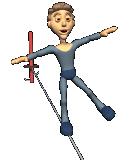
Prospect Park Zoo
"The Prospect Park Zoo began as a small menagerie located within Prospect Park. It was officially opened as the Prospect Park Zoo in 1935. This zoo had the typical architecture of the time, red brick with white trim, friezes, statues, cages with bars, and sea lions reclining on concrete platforms. The zoo, under the Wildlife Conservation Society, replaced the old zoo in 1989, Naturalisitc habitats replace bars, cages and pits. Historians will enjoy noting that the best of the old zoo remains in friezes from the Jungle Book, by Rudyard Kipling that still adorn the buildings. The lioness and her cubs' statue are located at the center of the zoo. The red brick buildings with white trim are the some on the outside, but all have state of the art, up-to-date naturalistic exhibits."
Joan Scheier
Prospect Park 1910
This early souvenir postcard postmarked 1910 shows the wooden structures and fences that were built along the parth that the visitors could stroll through and view the animals in the natural backdrop of the park. 
The Elk
All of the zoos in New York City began in a park. Central Park, Bronx Park, Barett Park, Battery Park, Flushing Meadows Park and Prospect Park. One of the first residents were elk, which had freely roamed the park and then were placed into fenced areas. 
Bears
When the zoo reopened in 1988 it was operated by the Wildlife Conservation Society. Sterile cages with bars were removed as were most of the large animals except for sea lions and polar bears. The zoo occupies the same location as did the menagerie of the 1860's and the Robert Moses Zoo of 1934.
The Design For Prospect Park Zoo
The plan for the Prospect Park Zoo was drawn by the same architect that designed the Central Park Zoo, Aymur Embury II. The fan shape was considered ingenious for permitting the observation of both outdoor and indoor cages.
Opening Day 1935
Opening day, July 5, 1935 was attended by New York City dignitaries and Parks Commissioner Robert Moses. The concrete sea lion platforms were installed at the center. The band is ready to play for the opening day ceremony. Concerts were given at the zoo during summer evenings.
Lions
Visitors could view the animals in their outdoor cages separated by railings and iron bars. It is important to remember that zoos built in the 1930's were in the context of the time and were considered a big improvement over the small menagerie enclosures built as the animals arrived. Starting in the 1980's this type of enclosure became obsolete in all the zoos in New York City.
Main Entrance
This is a view showing the main entrance and the twin staircases that led to the center sea lion pool. The twin staircases and the friezes atop the gates are still part of the entrance to the Prospect Park Zoo.
Elephants
Elephant keepers wore uniforms and carried an ankus, a hooked rod as they led the elephants inside to be fed. The keepers at this time were usually park employees, not specially trained zoo personnel.
Birds
Large ornate bird cages were part the zoo's exhibits. The cages housed birds in the spring and summer and small farm animals and plants during the winter months. The weathervane atop the cage is an example of decorative arts incorporated into the zoos exhibits.
Big Cats
This photograph shows an indoor enclosure typical of New York City zoos in New York City that were built in the 1930's. Cats would have an outdoor area as well as indoor enclosure. The window ledge is a natural climbing tree for the big cats and allowed them a view of the outside. Today all New York City zoos use natural looking habitats with trees and natural climbing and hiding places.
Prospect Park Zoo Renovation 1993
As with other zoos of the 1930's, the Prospect Park Zoo needed a major renovation. The buildings were not demolished but the insides were gutted to make room for updated and larger exhibits. The zoo reopened on October 5, 1993. It became the fifth facility of the Wildlife Conservation Society network of parks in New York City.
Hamadryas Baboons
The Animal Lifestyles exhibit is the habitat of Hamadryas baboons. Here the visitors can interact with these curious mammals through floor to ceiling. This inter-action provides enrichment for the monkeys and enhances the visits of both adults and children.
Sea Lions
The sea lion pool is twice the size of the space of the 1930's. Keepers hand feed the sea lions three times a day while telling visitors about these marine mammals.
Lioness And Cubs
The Lioness and Cubs sculpted by Victor Peters in 1899 is located at the base of the twin staircases as you enter the zoo. The statue was located inside Prospect Park before 1934 when Robert Moses, parks commissioner, moved it into the zoo to protect it from children using the lioness as a slide.
Thursday, May 15, 2008
"New York City Zoos" by Joan Scheier
Labels: .circus.
Subscribe to:
Post Comments (Atom)















0 comments:
Post a Comment